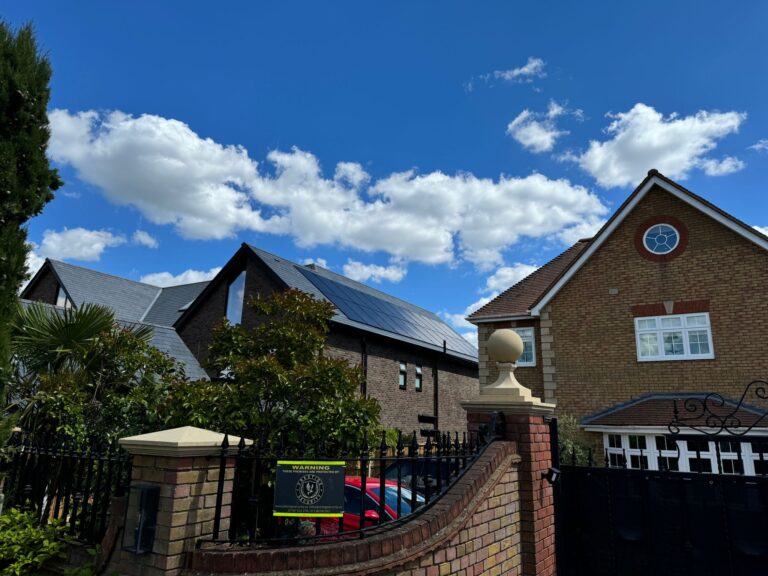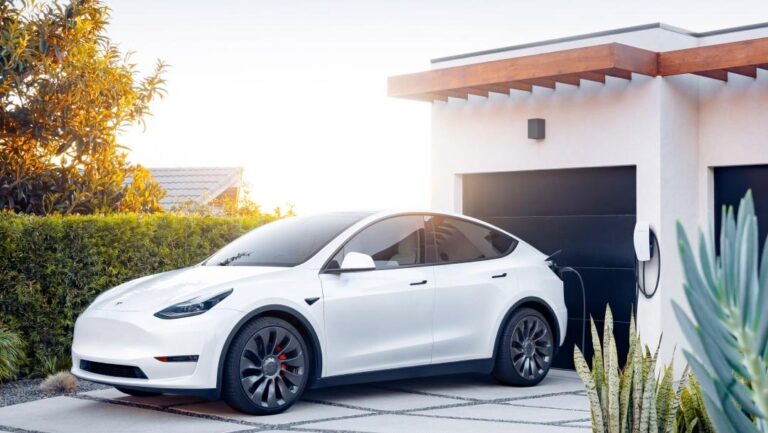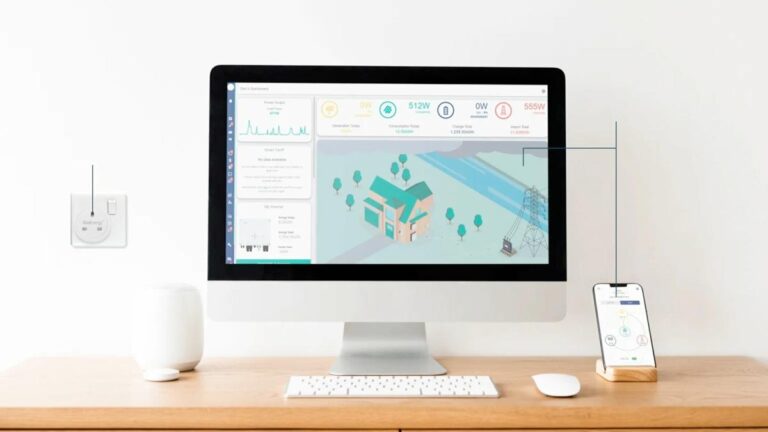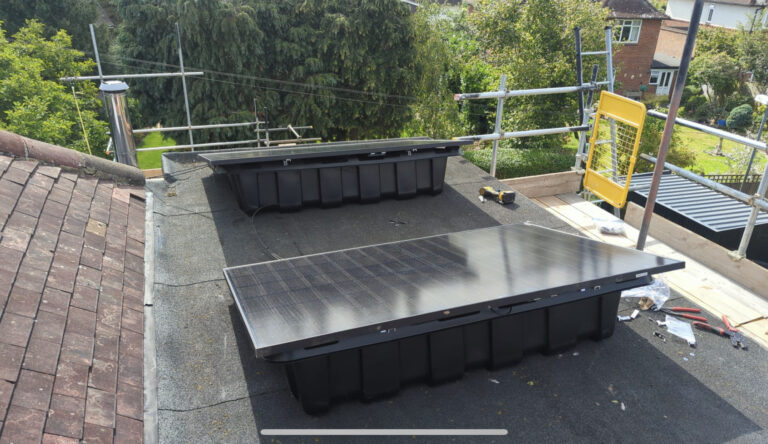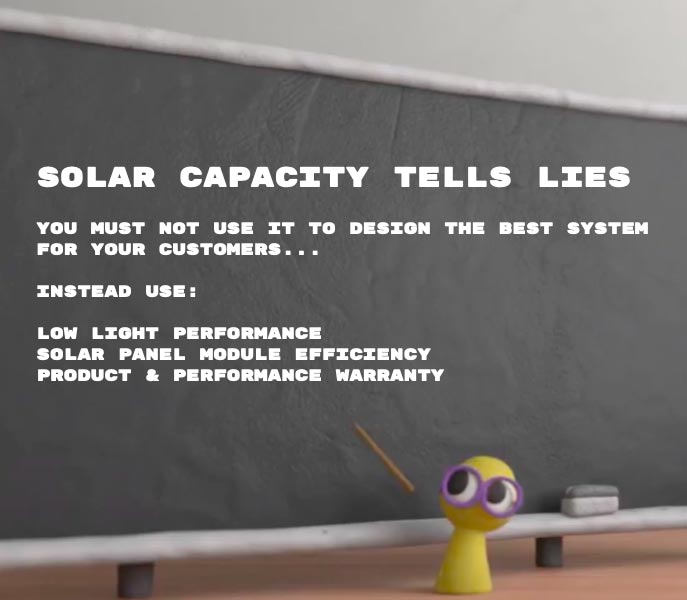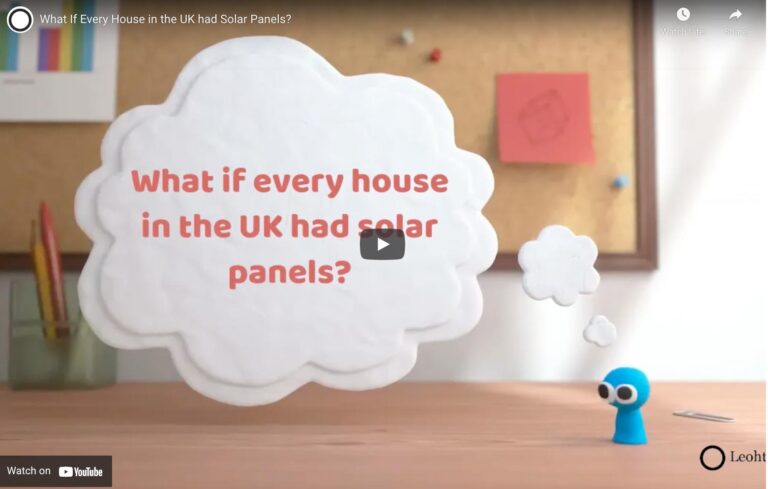Possibly.
While it’s actually quite rare, it does happen and when pigeons do nest under your panels it can be very frustrating, they will not damage the cabling underneath but they could make a mess on top of your panels. There are a few easy and non-invasive options to prevent this from happening.
What can be done to prevent pigeons from nesting under your panels?
There are several things you can do to prevent birds from nesting under your panels.
Fortunately, there are some simple, non-invasive options.
1. Bird mesh or bird netting surrounding the array.
The new bird mesh that we use – black pvc pastic wrapped around a thin steel wire – will look almost invisible from the ground and would provide good protection against birds nesting under your panels.
The cost of bird protection can vary depending on your system size, budget between £600-800 plus the scaffolding cost. If you are having a solar installation, a much more cost effective option is to opt for bird protection whilst the scaffolding has already been paid for.
Bird proofing cost: £600 – 800. (Black mesh).
Scaffolding cost: Varies around the country and the amount of scaffolding required.
Use our solar calculator to calculate the cost of your bird proofing.
2. Bird spikes surrounding your array
Not very humane! But it will stop pigeons from nesting underneath your solar panels.
- Not very humane
- Unattractive
3. Pigeon deterrents – recommended options
(source: Pigeon media, https://pigeonpedia.com/how-to-stop-pigeons-nesting-under-solar-panels)
There are a number of different pigeon deterrents available that you could try using on your solar panels.
- Bird decoys – get a large plastic imitation bird of prey such as a hawk, owl or falcon and fix it to your roof. Make sure it is well secured to prevent it from blowing away. Be aware that the effectiveness of a bird decoy will depend on how realistic it is and how confident your local pigeons are feeling!
- Electronic pest chasers – These emit high-frequency sounds that the human ear can’t hear but that pigeons hate. Set this up within earshot of your roof and the noise should deter pigeons from roosting there.
- Pigeon repellent gel – There’s nothing particularly nasty about this gel except that pigeons don’t like the feel of it because it’s sticky and makes them feel trapped, something that they are afraid of. Simply cover your roof with it underneath your panels and it will make pigeons unlikely to roost there. Be aware it will need to be reapplied periodically to remain effective.
4. Keep your garden and driveway clean
Pigeons like to nest nearby a source of food. If they do not have a nearby source of food then they’re much less likely to view your roof as a good place to nest!
Conclusion
If you didn’t have bird proofing fitted during installation and are now considering the costs, why not try one of the simpler deterrents in option 3 such as the Electronic pest chaser and by keeping your garden and driveway clean before opting for the more expensive option which would now require scaffolding.

